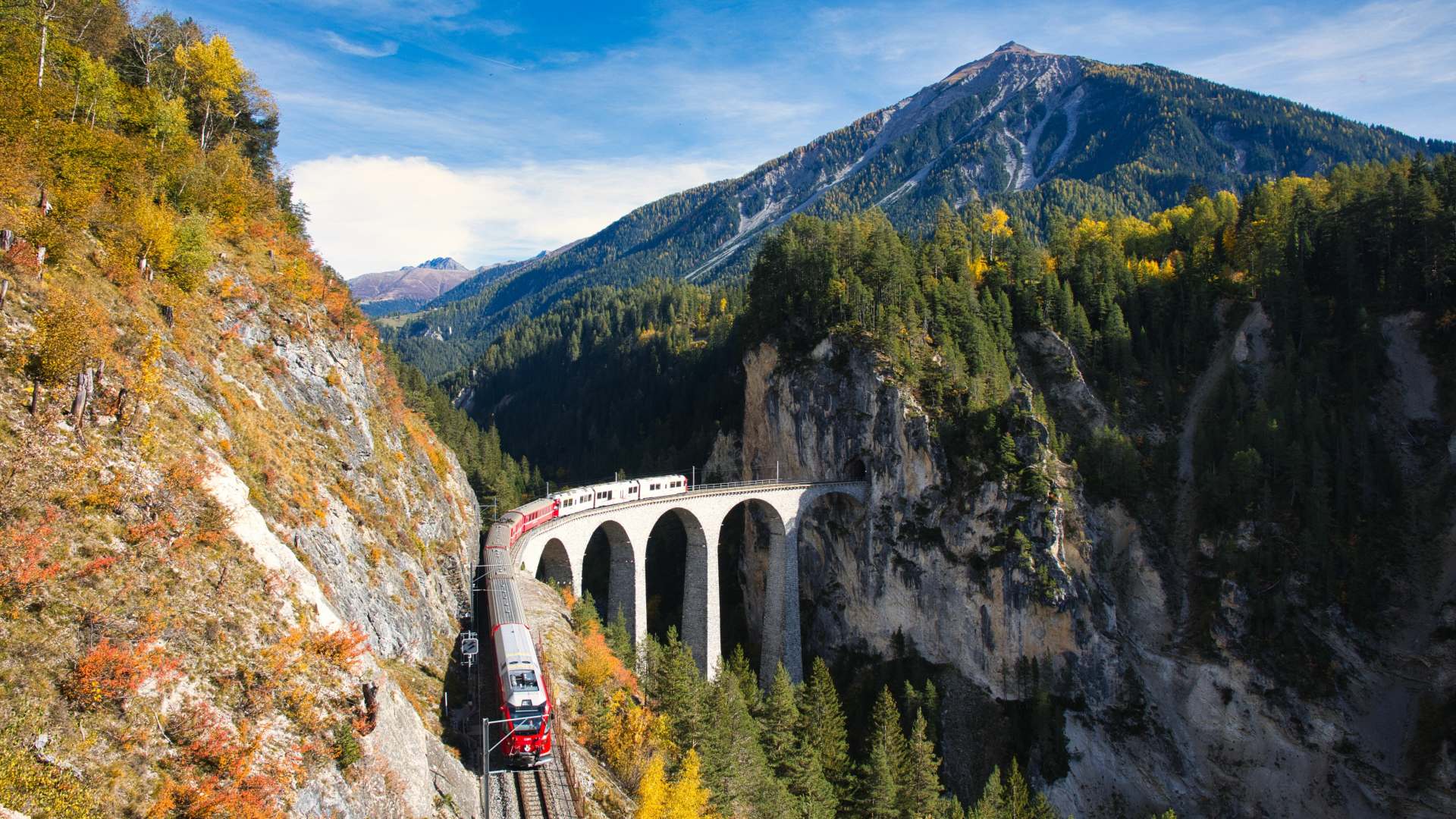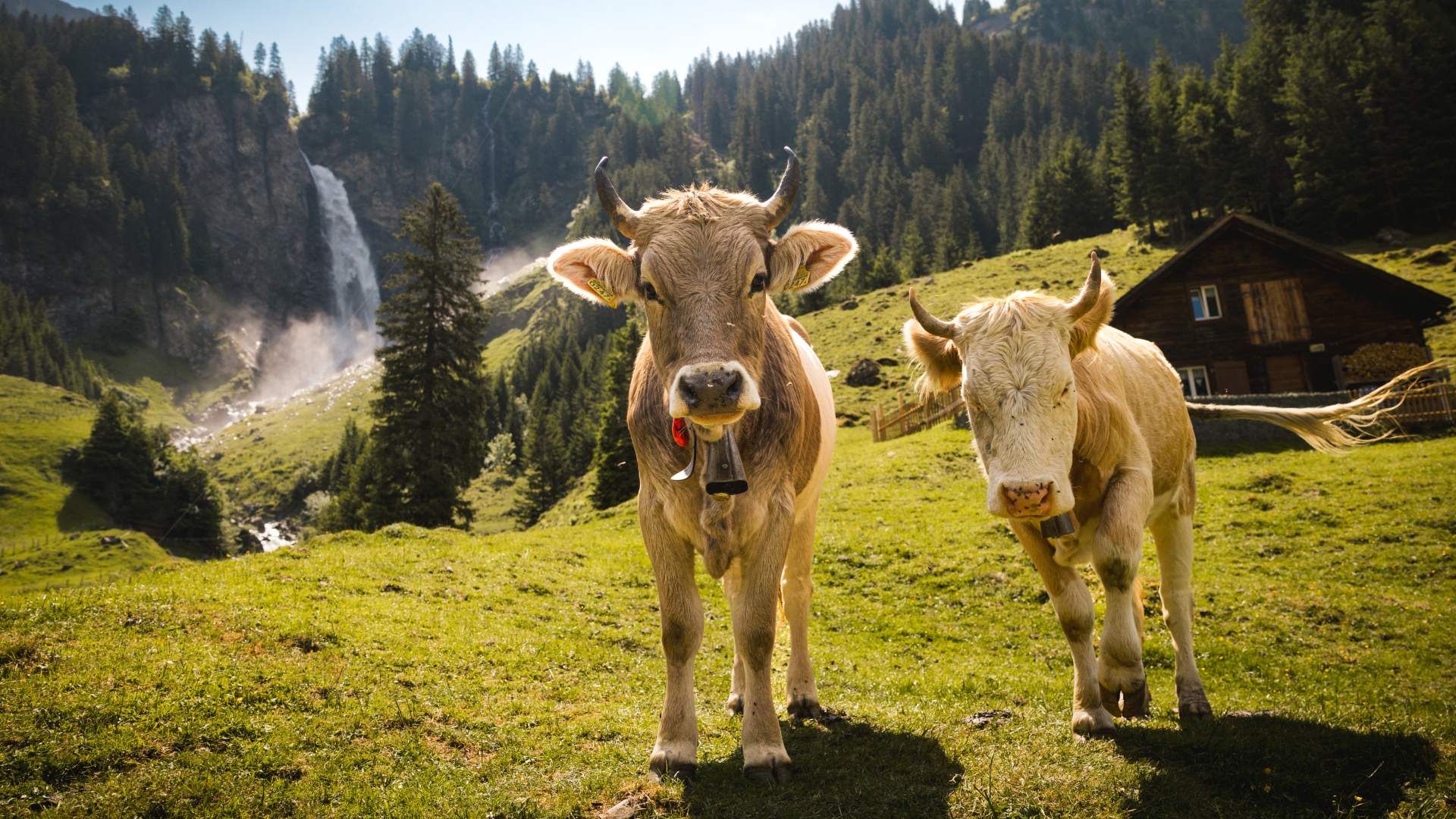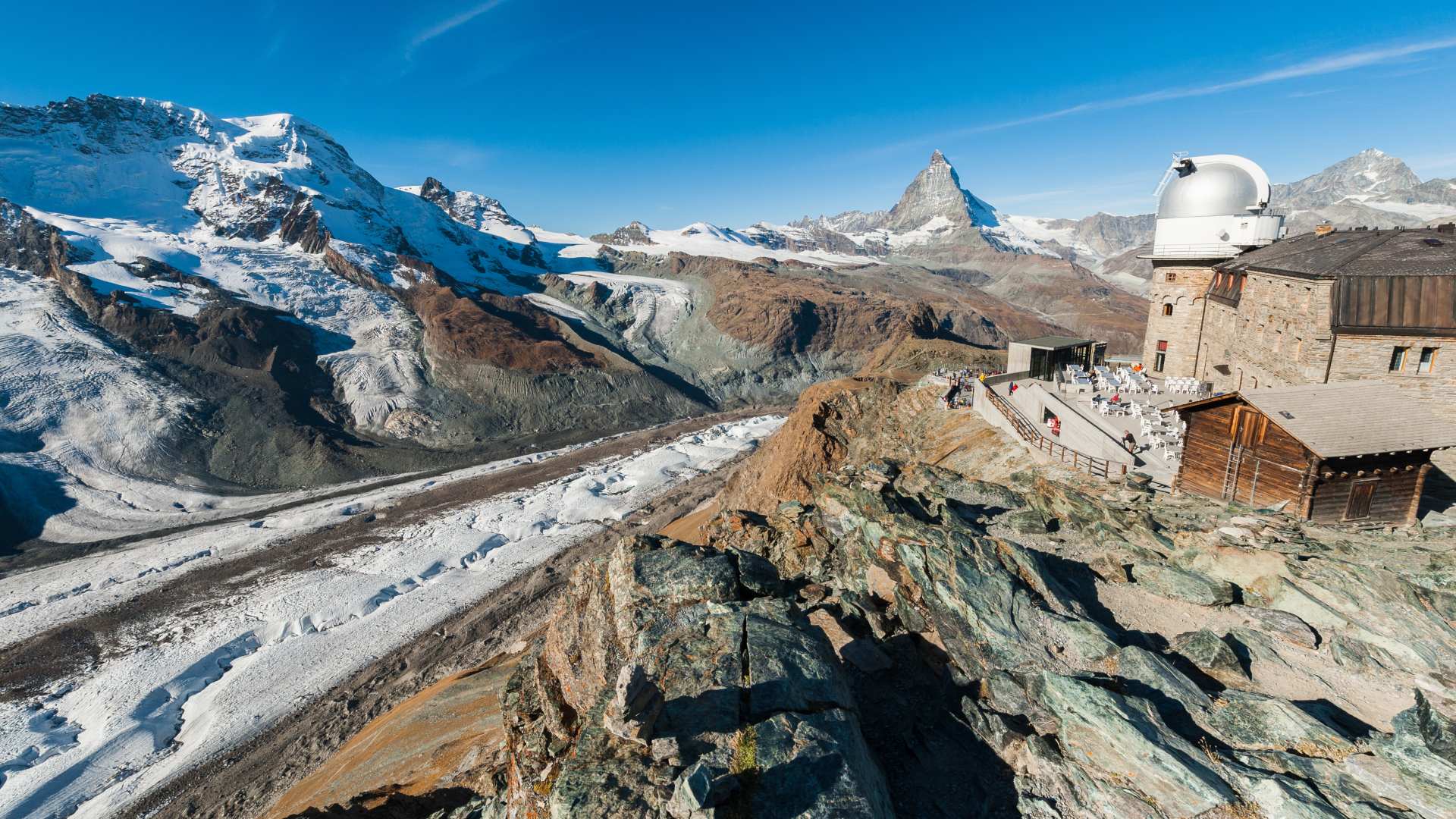Where in the world can you find fairytale castles, snow-capped peaks, and turquoise lakes? That would be the Alps.
This mountain range stretches for around 1,200 kilometres (750 miles) across 8 European nations. These Alpine countries are Austria, France, Germany, Italy, Liechtenstein, Monaco, Slovenia and Switzerland.
Thanks to the region’s diverse landscapes and cultures, there are plenty of fun facts about the Alps. Read on to uncover the Alps facts we think you’ll find the most interesting.
- Experience multiple countries on one unforgettable trip with these Alps tour packages

1. The Alps started forming millions of years ago
The Alps mountain chain is the result of the Eurasian and African tectonic plates colliding. This lengthy mountain-building process was initiated around 65 million years ago.
That said, the most significant period of uplift happened between 44 million and 9 million years ago. During this time, the Alps rose to heights close to that of the present-day Himalaya.
Venture to the Alps and you’ll find that since then, the mountains have been eroded by glaciers, rivers and precipitation. Nowadays, Mont Blanc is the highest peak in the Alps. Its impressive summit stands 4,806 metres (15,768 feet) above sea level on the border between France and Italy.
- Explore the Swiss Alps and beyond on a self-drive tour of Switzerland

2. Thousands of animal species live in the Alps
With an estimated 30,000 animal species, it's safe to say that the Alps are full of life. In fact, this is Europe’s most biodiverse region outside the Mediterranean.
One mammal you could spot here is the Alpine marmot. When they’re not hibernating during winter, you can see these large ground-dwelling squirrels in meadows. Listen for their distinctive peeps as they call to each other.

The Alps are also home to bigger mammals, including types of wild goat like the Alpine ibex and chamois. Not to mention elusive creatures such as the brown bear and Eurasian lynx.
You’re unlikely to spot either of the latter as they’re so rare. But if you’re exploring high valleys, you might be lucky enough to see ibex or chamois.
What’s more, there are around 400 bird species in the Alps. This includes the golden eagle, bearded vulture and Alpine chough (pronounced “chuff”), the most common bird in the region.

- See nature at work on a self-drive tour of Italy
- Related: Most beautiful lakes in Switzerland
3. Some of the world’s most beautiful railways are found here
Head for the Swiss Alps, and you’ll have your pick of stunning rail journeys.
You could even ride the world’s slowest “express” train – the Glacier Express. It travels between the Alpine village of Zermatt and the resort town of St Moritz in about 8 hours.
While the pace isn’t quite glacial, at an average of 39 kilometres per hour (24 miles per hour), it is relaxed. But when there are jaw-dropping views at every turn, you’ll want plenty of time to soak up the scenery.

There’s also the Jungfrau Railway. Hop aboard and you’ll be whisked up to Jungfraujoch – Europe’s highest train station. Step onto the station’s viewing platform at an altitude of 3,454 metres (11,332 feet) and you’ll be surrounded by countless snow-capped peaks.
When you’re done marvelling at the scenery, check out the Jungfraujoch’s gallery of ice sculptures. Or head for the restaurant before taking time to browse the souvenir and chocolate shops.
Other beautiful Swiss railways are the Gornergrat Railway, Gotthard Panorama Express and Bernina Express.
- Discover epic rail journeys on a Switzerland train tour
- Related: Best things to do in Switzerland

4. This is one of the most popular places to visit in Europe
Staggering scenery, rich heritage and delicious cuisine bring around 120 million people to the Alps each year.
The Alpine region has been a favourite place for people to unwind since before the 20th century. Of course, the number of adventure-seekers was much lower back then.
Before winter sports became popular with visitors, summer was considered the only time to go to the Alps. Nowadays, people also come between December and April to enjoy activities like skiing and snowboarding.
If you’re interested in sightseeing rather than snowsports, we recommend travelling between May and October. This time of year is ideal for exploring, thanks to warmer temperatures and longer days.
- Explore countries like Austria and Germany on an Alps winter or European Christmas market tour
- Related: Northern Europe – Best places to go

5. The Alps are home to hundreds of castles
With its cobblestoned streets, medieval fortresses and lakeside castles, exploring the Alps can feel like stepping onto a film set.
To see Disney’s inspiration for the Cinderella palace, check out Neuschwanstein Castle in southeast Germany. Its striking hilltop location and fairytale turrets have made this Bavarian castle one of the most famous in the Alps.
Alternatively, head for Swiss castles like Château de Chillon on the shores of Lake Geneva. Here you’ll find yourself transported into the world of Disney’s The Little Mermaid. This lakeside chateau was the influence behind Prince Eric’s castle.
Another must-visit place for pretty castles is Lake Thun in the Bernese Alps. Clustered around the lake you’ll find more castles worth adding to your travel wish list – Oberhofen, Hünegg and Schadau.
- Related: Disney movies set in Europe

6. There are over 400 varieties of Alpine cheese
Yes, there’s more to Alpine cheese than Emmental, the quintessential Swiss cheese with holes.
In fact, there are around 475 varieties of cheese in Switzerland alone. Take the wider Alps into account, and that’s a lot of cheese to get through.
While you probably won’t be able to try them all during one visit to the Alps, here are some to look out for:
- Gruyère
- Raclette
- Comté
- Emmental
- Fontina

Fondue is one of the most well-known cheese dishes in the Alps. It’s made using cheeses like Gruyère, Comté or Emmental. These are melted in a pot with wine, and the bread is dipped in on skewers.
Dating from around the 18th century, fondue started as a way for farmers to use up hardened cheese and day-old bread. But over the years it’s become a much-loved delicacy and tradition.
Imagine you and your travel buddies, gathering around a pot of delicious melted cheese and sharing stories from the day.
Good to know: If you’re having a drink on the side, we recommend wine rather than beer. That way, the cheese won’t harden in your stomach. The locals also have an unwritten rule – if you drop your bread into the fondue pot, the next round is on you.

7. Alpine lakes are known as Europe’s “water tower”
There are 3,000 to 4,000 lakes in the Alps. While some of these are small, others such as Lake Geneva, Lake Constance and Lake Como are among the largest in Europe.
So although the Alps cover just 11% of Europe’s landmass, the region provides lowland Europe with 90% of its water supply. This doesn’t just include drinking water during the warm summer months, but also irrigation and power from hydroelectricity.
Some Alpine towns and villages can function entirely on their own supply of hydroelectric power from nearby water sources.
- Get inspired by these popular Switzerland tours
- Related: Switzerland in summer – What to do and where to go

8. Switzerland’s national instrument is the alphorn
This large woodwind instrument was used by Alpine herdsmen from around the 1500s. As well as calling their cows in for milking, the herdsmen used it to communicate with each other.
Despite falling out of common use when cheesemaking moved from Alpine pastures into the villages, the alphorn was popularised again in a 19th-century folk revival. Now, it’s Switzerland’s national instrument.
Alphorns can be as long as 4 metres (13 feet) as they’re often carved from one tree. Visit the Swiss or Bavarian Alps, and even if you don’t see or hear a real one for yourself, you’ll spot them on souvenirs.

9. You can get up close to glaciers in the Alps
Head for the Alps and you’ll notice many of the highest peaks and valleys are home to sparkling glaciers. With around 5,000 glaciers in the Alps, they’re hard to miss
What’s more, with infrastructure like mountain railways and cable cars, you don’t need to be a mountaineer to appreciate them up close.

To glimpse one for yourself, visit Switzerland’s Bernese Alps where you’ll find the Aletsch Glacier, the largest in the Alps.
For the best views, ride the Jungfrau Railway to the Sphinx Observatory at Europe’s highest train station. You’ll also catch sight of iconic peaks such as the Eiger, Mönch and Jungfrau.
Or why not check out another top Alpine attraction – the Gorner Glacier? The glacier flows down from the summit of the Dufourspitze, the second-highest mountain in the Alps.
Just a short hike from Gornergrat train station, you can snap photos of the glacier with the Matterhorn’s pyramidal peak as your backdrop.
- Related: Must-see mountains in the Alps

Have a multi-country adventure in the Alps
If these fun facts have you eager to explore the Alps for yourself, then it’s time for a European escape.
Discover the Alps with Nordic Visitor and a dedicated travel consultant will book your accommodation, rental car and optional excursions. No matter whether you choose a multi-country or Switzerland self-drive tour, you’ll love having the freedom to travel at your own pace.
Or why not join a small group of like-minded travellers on a guided tour of the Alps? This way, you'll have the bonus of learning from a knowledgeable guide throughout your trip.
Get in touch with us and our Alps-based experts will plan your dream road trip.
